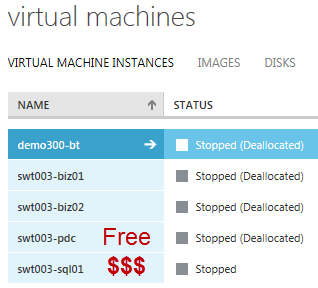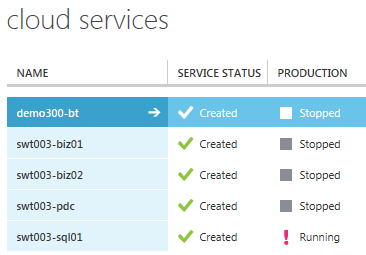
by community-syndication | Jul 26, 2013 | BizTalk Community Blogs via Syndication
This post is a continuation to the Schematron validation using XSLT in BizTalk blog series The source code for this blog post has been uploaded in the below location http://code.msdn.microsoft.com/Schematron-validation-b4d892ee So, How to do schematron validation using XSLT in BizTalk? High level steps 1. Define the schematron rules in the .sch file 2. Use XSLT […]
Blog Post by: shankarsbiztalk

by community-syndication | Jul 26, 2013 | BizTalk Community Blogs via Syndication
This blog post is a 3 part series. The source code for this blog post has been uploaded in the below location http://code.msdn.microsoft.com/Schematron-validation-b4d892ee BizTalk has an out of the box XML validation pipeline component to validate the semantics of the XSD schema and return the error message. However it has a lot of drawbacks – […]
Blog Post by: shankarsbiztalk

by community-syndication | Jul 25, 2013 | BizTalk Community Blogs via Syndication
I’ve been working on a BizTalk Server 2004 project that had (not any more) between 6 or 8 visual studio solutions each one with a BizTalk Project inside. After a few minutes swapping from a solution to another I decided to add all the project in a single solution. I notice that all the solution […]
Blog Post by: Sandro Pereira

by community-syndication | Jul 24, 2013 | BizTalk Community Blogs via Syndication
This post is to demonstrate how we can use WCF-WebHttp receive adapter for HTTP GET/POST. This also include the re-direct of https to http. Consider the below URL are used in an (legacy) application which send GET/Post request to any other Integration Systems. If we need to get this GET/POST request flowing into the […]
Blog Post by: shadabanwer
by community-syndication | Jul 24, 2013 | BizTalk Community Blogs via Syndication
Microsoft offers REST support in BizTalk Server 2013 through the WCF-WebHttp Adapter. Something that has been anticipated by BizTalk developers for sometime. With BizTalk Server 2010 there was already quite a demand resulting:
in a TechNet Wiki Article called Invoke ReSTful Web Services with BizTalk Server 2010 describing a solution to consume Restful services with BizTalk 2010,
and a REST
by community-syndication | Jul 24, 2013 | BizTalk Community Blogs via Syndication
Recently I wrote a post for TechNet Wiki Blog and pointed out that many resources can be found through the TechNet Wiki. So in case you want to check out what is available on TechNet Wiki around integration I suggest reading Integration is my business and business is good!.
I have beenworking on a couple of articles for TechNet Wiki last 18 months and published them. I am not the only one.

by stephen-w-thomas | Jul 23, 2013 | Stephen's BizTalk and Integration Blog
|
When driving down the street I think we all know what to do when we see a Stop Sign – we know we need to stop the car.
What happens when you see Stopped as a status for a Windows Azure Virtual Machines?
A little over a month ago Microsoft announced they would no longer charge for a Stopped Virtual Machine. This came as welcome news as I am sure many of you are like me – have left something on for a few days and received a bill for it.
What Microsoft introduced was really a new definition of Stopped to go along with the existing process they had in place.
We now have the following two definitions:
- Stopped
- Stopped – Deallocated
|
|
When you create a Virtual Machine inside Windows Azure you get a Cloud Service to basically host that virtual machine role. You can add more than one Virtual Machine to that Cloud Service and would do so to achieve high availability.
Up until a few days ago, that Cloud Service was always hidden from the Windows Azure Management Portal. You could see it when you deleted the last virtual machine in the service or using PowerShell. Now, you can see the services inside the UI – so that should help with the confusion. The Cloud Service, along with other things, is what gives your Virtual Machine a Virtual IP address (VIP).
In the pictures below you can see a few of my Virtual Machines and Cloud Services in the Stopped and Stopped Deallocated state.
What’s the difference between Stopped and Stopped– Deallocated?
Stopped $$$ – When a virtual machine is stopped you are still being charged for the virtual machine. You also have the Virtual IP (VIP) address reserved and when you start the machine back up again you will get the same VIP. This is useful when you must have the same VIP.
Stopped Deallocated – When a virtual machine is stopped deallocated you are no longer charged for the virtual machine. The catch is, when you start it back up you might not get the same VIP back again. You get a message about this when you stop the Virtual Machine.
For all the work I am doing right now, the Stopped Deallocated state works just fine for me.
See below on how to get your Virtual Machine into a Stopped or Stopped Deallocated state.
How to Stop a Virtual Machine ($$$)
- PowerShell
- Stop-AzureVM -Name $VirtualMachineName -ServiceName $ServiceName –StayProvisioned (StayProvisioned is new in PowerShell as of 06/13)
- Selecting Shut Down while logged into the Virtual Machine
- REST API
- Example: https://management.core.windows.net/<subscription-id>/services/hostedservices/swt003-sql01/deployments/swt003-sql01/roleInstances/swt003-sql01/Operations
How to Stop – Deallocate a Virtual Machine (Money Saver!!!!)
- PowerShell
- Stop-AzureVM -Name $VirtualMachineName -ServiceName $ServiceName –Force (Note if you don’t use –Force you get an annoying confirmation popup)
- Using the Windows Azure Management Portal
- You will get a confirmation informing you the Virtual IP will be released
Please post if I have missed any other ways to stop a Virtual Machine.
How are you using Windows Azure Virtual Machines? Does the Stopped Deallocated state work for you?

by community-syndication | Jul 23, 2013 | BizTalk Community Blogs via Syndication
Congratulations to Anthony Borton, QuickLearn’s TFS course developer and lead TFS trainer! Anthony recently received an email from Microsoft confirming he delivered the highest rated developer pre-conference seminar at TechEd Europe this year. His seminar was titled Kickstart Your Application Lifecycle Management Using Team Foundation Server 2012 and was focused on helping attendees get a […]
Blog Post by: Nick Hauenstein
by community-syndication | Jul 23, 2013 | BizTalk Community Blogs via Syndication
So you need a multi-server BizTalk Environment, and you want it automagically provisioned in one click? What will you get? A zip file with some powershell scripts which will perform the following tasks for you (all in one click)… Read more ›
Blog Post by: Ren%u00e9 Brauwers
by Rene Brauwers | Jul 23, 2013 | BizTalk Community Blogs via Syndication
So you need a multi-server BizTalk Environment, and you want it automagically provisioned in one click?
A zip file with some powershell scripts which will perform the following tasks for you (all in one click) 🙂
1.Basic configured Virtual Network
includes creation of an affinity group if not available
includes creation of storage if not available
2. Configured Domain Controller
includes Active Directory Installation
includes BizTalk Service Accounts
includes BizTalk Groups
3. Configured SQL Server joined to the domain
includes firewall changes
includes msdtc changes
includes sql protocol changes
ensures domain admin to be added to the sql-server sysadmin role
4. Fully Configured! BizTalk Server joined to the domain
includes all BizTalk Features with exception of BAM Alerts
includes firewall changes
includes msdtc changes
includes configuration of hosts / host instances and adding them to the adapters
1. Download the powershell scripts here
2. Unzip
3. Download your azure publisher profile here
4. Open the script in your favorite editor using Administrative Privileges
5. Modify the script named Start_BizTalk_Multi_Server_Azure_Provisioning_v1.0.ps1
6. Run the script and wait.
Powershell executing
<embed width=”425″ height=”355″ type=”application/x-shockwave-flash” src=”http://www.youtube
allemagne viagra.com/v/dSIsRK0gJa0&hl=en” />
BizTalk Server End Result
Special thanks and credits go out to:
Peter Borremans, who wrote the following article which got me going
Jeremie de Villard, I used his adapted BizTalk Configuration Tool and Task-Schedule script to auto-configure BizTalk
Scott Banwart, I used his powershell script as basis for configuring the BizTalk Hosts, Host Instances and Adapters
Please note; the scripts are as is; go ahead and play with it. Most definitely you can clean it up more and make it more efficient 😉 If you make any modifications, feel free but be nice and SHARE!! 🙂
This work, unless otherwise expressly stated, is licensed under a Creative Commons Attribution-ShareAlike 3.0 Unported License. http://creativecommons.org/licenses/by-/3.0/
Cheers
René

![]()






